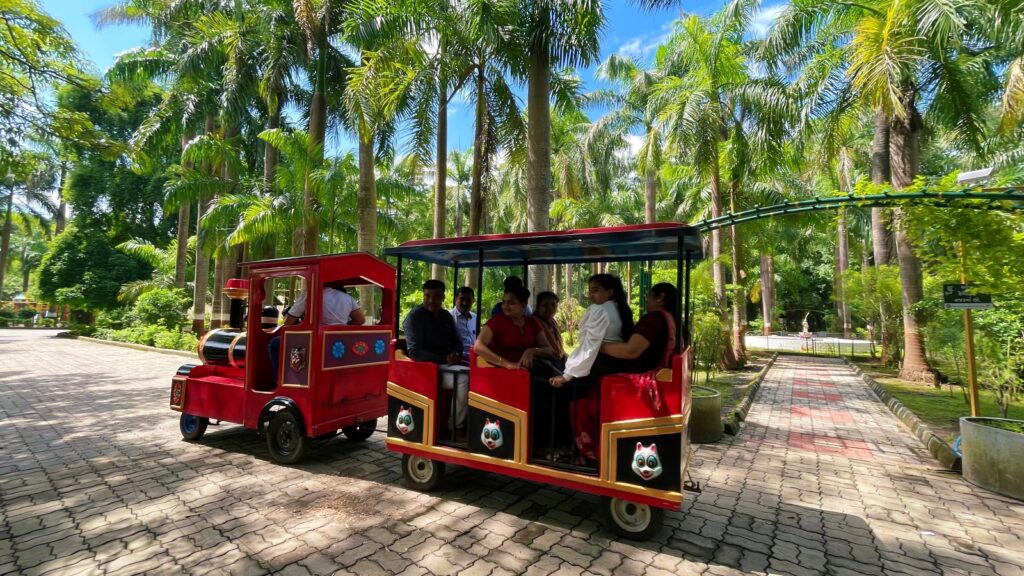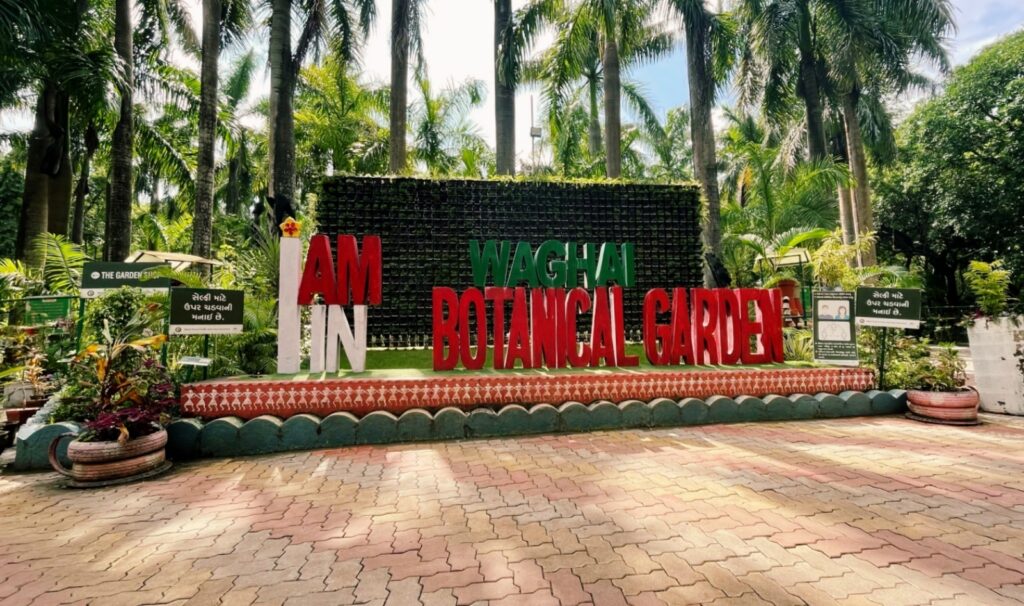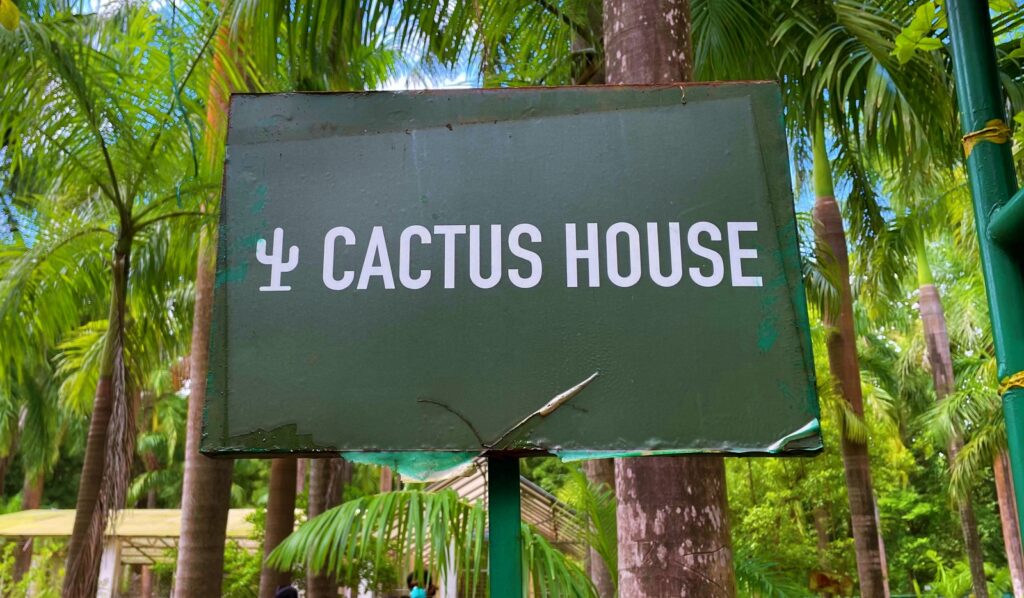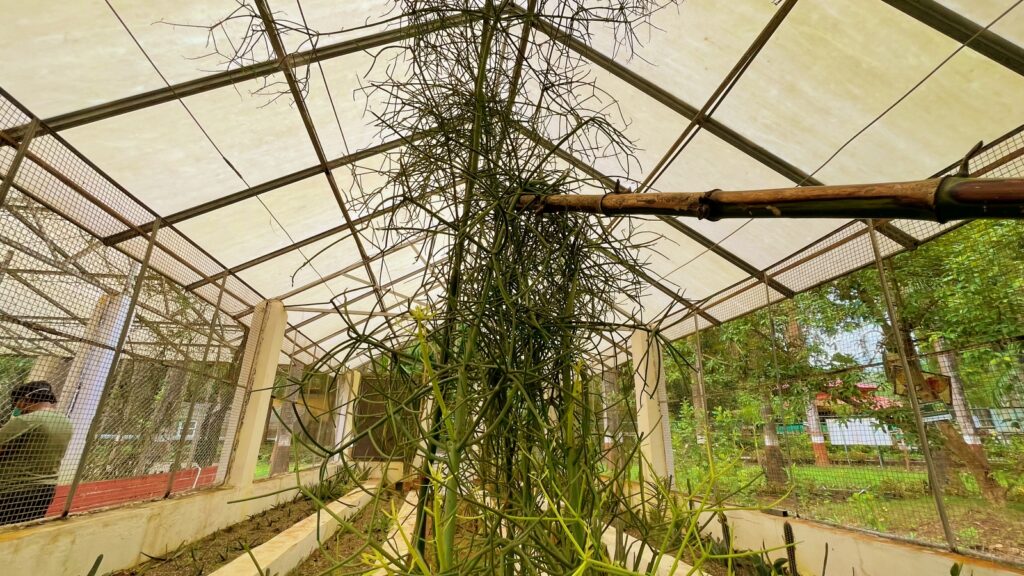Bio Diversity at Waghai Botanical Garden in Dang
The pandemic has brought into perspective something that most people around the world have been ignoring for some time: the urgent need for climate control and environmental action! As the focus shifts to evolved sustainability, people have become more aware of how plantation contributes to our overall well-being. Following the trend of heightened awareness, I find myself more curious on the environmental front. I’m looking forward to visiting sites where people can strengthen their commitment to sustainability and reinforce their belief in the power of addressing atmospheric issues. Waghai Botanical Garden, the largest in Gujarat, shares the same values and celebrates every day as an Earth day.

This beautiful bio-diversity conservation centre, about 2 km from Waghai, introduces visitors to various native and exotic plant specimens. The WBG is open from 8 a.m. to 6 p.m., and while previously, there was no charge to enter this garden, adults must now pay Rs. 10 per person, while minors Rs. 5 per person. A one-and-a-half-hour walk through nature trails during my visit to WBG taught me how to classify plants and their uses in food and medicine; in short, about our reliance on them. This nature study leads to and from Vansda Park, with a guide greeting and orienting you at each turn. If you can’t find a tour guide, rely on the signboards and written information around the centre.
Table of Contents
Inside Waghai Botanical Garden
At the entrance to this massive botanical garden are three arched doors that have the appearance of a bent tree on either side. These three arches, painted hickory-brown and sprinkled with fake leaves, are crowned with yellow signage that reads Vanaspati Udhyan, Waghai. A long trail of surrounding scenery will greet you as you step beyond the main entrance.

Continue walking, and you’ll encounter plant-covered walls, bamboo plant holders on either side, photographers preparing for a shoot, and an English-style red train making its rounds on the bare grounds. The real adventure begins when you reach the “I am in Waghai Botanical Garden” podium, which unfurls the charm of the natural reserve. From here, our guide took over! My guide’s first recommendation was to download the Floral Safari app, which provides accurate scientific descriptions of every plant found here.
It’s an android-based programme created specifically for the Waghai Botanical Garden plantations. This app is a must-have for this garden, which contains approximately 270 trees, 119 medicinal plants, 89 cactus, 82 ornamental plants, 50 shrubs, 29 fruit bushes, and 28 tuberous succulents.
89 Species at Cacti House
The journey began with a look at some of the Cactaceae family’s lesser-known members, the cacti. Cacti are a diverse group of hot-weather plants, and each has a distinctive appearance. Because cacti require so little water to thrive, they are so widespread in deserts. Droughts are no match for cactus, which can survive by storing its own water. Both succulents and cacti are found in the Cactaceae family, but this does not indicate that all cacti are succulents.
Cacti are succulents with areolas; other succulents are not. Areolas, the small cushioned structures that grow hair, spines, and branches to designate their family, are unique to cacti. The flowers of cacti are pollinated by bats, birds, and insects, as I discovered while exploring the Waghai Botanical Garden’s Cacti house. At this plot, you can observe 89 different species of cacti.
Arogyavan
Arogyavan is the most extensive green patch in Waghai Botanical Garden. It is credited to Ayurveda, an ancient system of medicine with Indian origins. Ayurveda, the alternative medicine, has made significant contributions to contemporary medicine, which is now generally accepted worldwide.

Over 200 varieties of shrubs, herbs, and trees dwell on this plot, each with a signboard that describes them well. The qualities of the plants you see here will be described in depth by your guide.
Dang Plot

This plot introduced me to some of the Dang forest’s endemic species. It showcases 400 plant species found in the Dang forests. Dang meaning bamboo in Gujarati, is found in the Purna wildlife sanctuaries and Vansda national park in the Dang district of the eastern highlands region. Based on climate, soil, geology, and natural vegetation, the Dang neighbourhood is additionally split into Lower and Upper Dangs.
Bamboo Plot

India is the world’s second-richest country in bamboo biogenetics, with unrivalled social and economic clout. Waghai Botanical Garden’s bamboo plot is symbolic of these genetic riches. In India, 19 of the 136 species and 22 genera are native, and this plot contains 21 species of all Bamboos. You can examine a range of fast-growing perennial grass plants here. Some of these species are endemic to the dang region and are widely used by locals in south Gujarat as a source of income.
Evergreen Plot
Waghai Botanical Garden’s evergreen plot echoes India’s Southern and North-Eastern woods, prosperous in commercially important species. Dalbergia latifolia (Indian rosewood), Tectona grandis (Teak), Pterocarpus marsupium (Malabar kino), and Terminalia Crenulata (Indian laurel) are a few of these trees. Nearly 2100 birds, 350 mammalian species, 350 reptile species, and an infinite variety of invertebrates call these evergreen forests home.

Waghai Botanical Garden’s evergreen plot features around 328 plant species, including Artocarpus Heterophyllus, Hopea ponga, Duabanga Grandiflora, Tetramalous Nudiflora, and others.
Palm Plot

Over 20 Arecaceae species welcomed me to the WBG Palm plot. Palms have been used for human cultivation since the beginning of time, as evidenced by their mention in various religious texts. The subtropical climate is home to a broad assortment of tropical plants with thick, flowing leaves that display a medley of patterns. Throughout India and the world, palm trees are renowned for their commercial value, primarily derived from coconut goods, such as palm wood, oil, wax and rattan cane.
Tuber Plot

There are over 40 plant species in the Tuber Plot, many of which have more extensive arrangements because some plant species employ these extensions as nutrient storage during the winter or dry months. For the growth and reproduction of some plants, these nutrients are necessary. Tuber plants such as the potato and the yam are among the most prevalent. Ginger, turmeric, sweet potato, dahlia, and cassava are all examples of root tubers.
Ancient Tree of PragVad
The PragVad tree (Ficus Microcarpa) is one of the oldest trees in India. PragVad, also known as Chinese Banyan or Indian Laurel, is a tree that grows in hilly areas at high elevations. The tree got its name from Lord Shiva, who was spotted seated beneath it by saint Gana Sambandar, according to Indian mythology. As a result, many people regard it as an immortal sacred tree of rejuvenation, where one can reach God’s most excellent knowledge of the truth.

PragVad is also the tree under which Brahma offered Brahmgyan, which was absorbed by its roots and continues to permeate the holy vibes in the soil and surrounding climate, according to the guide. As a result, if you sit under Pragvad, you gain Brahmgyan! In terms of therapeutic application, its bark juice is used to treat ulcers, liver diseases, and leprosy.

A magnificent lake, as well as Fruit, Orchid, and Taxonomy plots, can be found at Waghai Botanical Garden.







